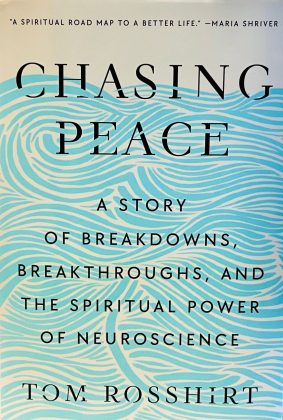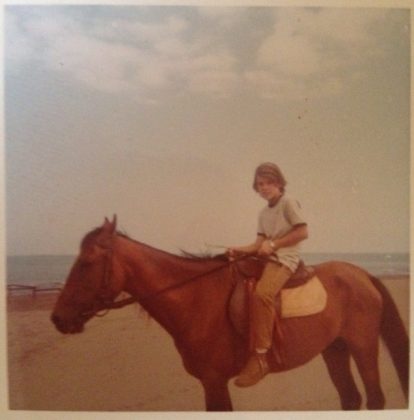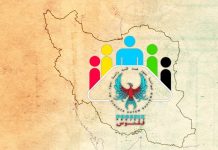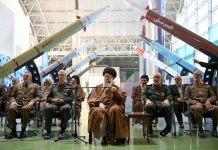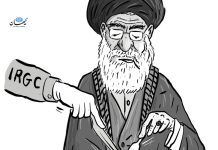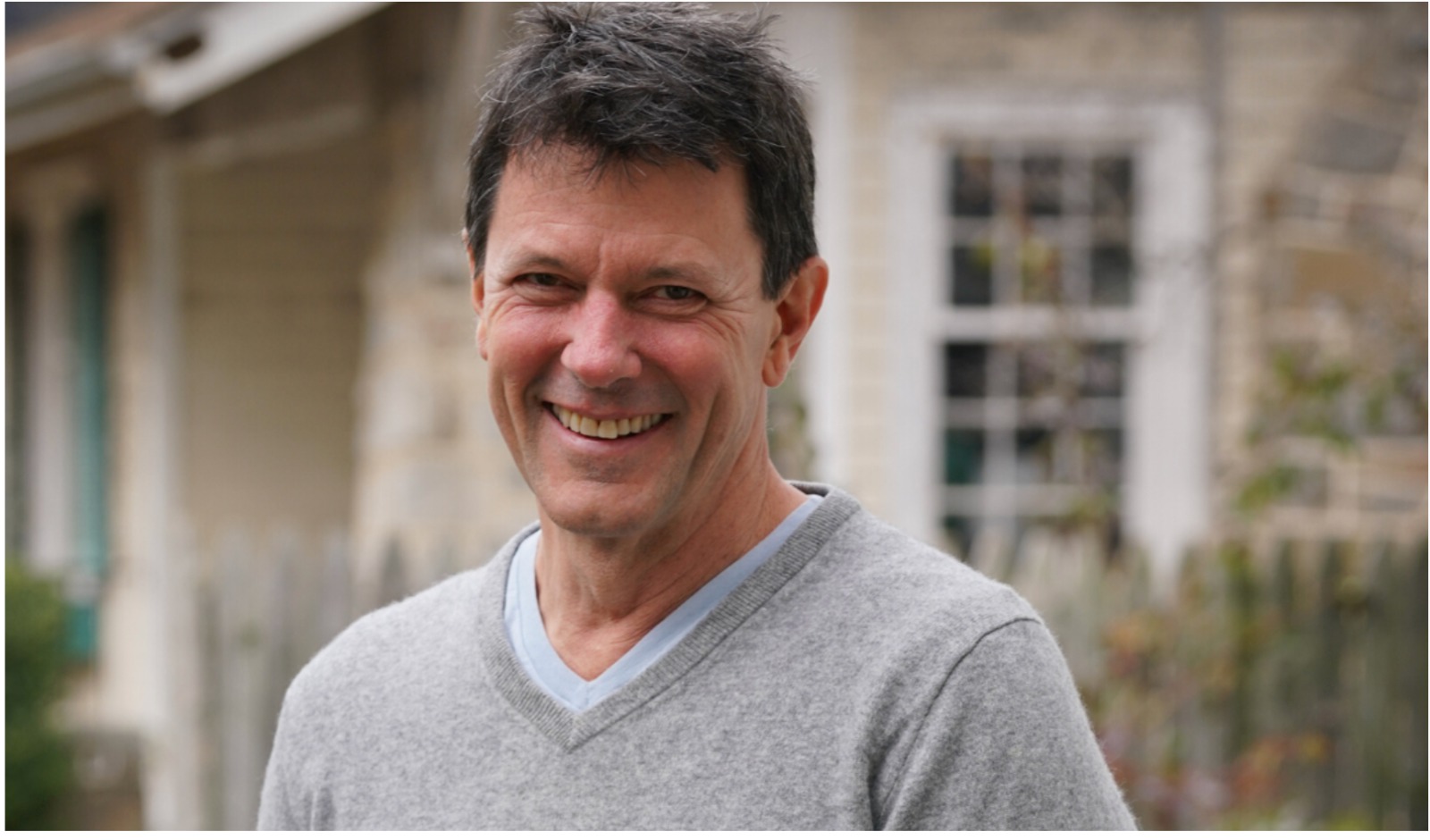
Tom Rosshirt is an American author and strategist who works with leaders in business, philanthropy, and academia, and spent three years in Iran as a child. Rosshirt was President Bill Clinton’s national security speechwriter and Vice President Al Gore’s foreign affairs spokesperson.
In his new book – Chasing Peace: A Story of Breakdowns, Breakthroughs, and the Spiritual Power of Neuroscience – Rosshirt describes his time at the White House as representing both the peak of his success and “the beginning of the breakdown.”
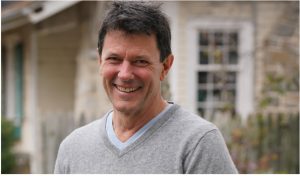
“The outcome of our lives, I believe, depends on how we handle the breakdowns,” he writes, “and whether we see them as opportunities for a breakthrough.”
The book chronicles his search to overcome debilitating anxiety, depression, and brain fog, using the latest advancements in neuroscience to transform his brain’s ability to cope with life’s challenges.
His time in Iran had a significant impact on his life. “All the things that I liked, all the parts of myself that I wanted to explore and express, were given to me in Iran,” he said in a recent video interview with Kayhan Life, where he reflected on his experiences in Iran during the 1970s.
The following are excerpts from the interview.
Why did you write Chasing Peace?
For eight years, I suffered from a chronic, stress-based illness that led to anxiety, depression and brain fog that sidelined me from my life. And then I got better – a LOT better – from a new approach drawn from the insights of neuroscience.
The core insight is simple: many chronic conditions in the body start in the neural circuits of the brain, brought on by fear and a sense of danger. If you treat the body to heal conditions that start in the brain, you’re on the wrong track. On the other hand, in many cases, if you change the thoughts and feelings that shape the brain and feed the fear, you can start to heal the body. That’s what healed me – learning a technique that helped me change my response to fear.
Did living in Iran have an impact on your understanding of peace? Were there any specific cultural or spiritual influences that shaped your book?
I think it would be impossible to be a child in Iran, visiting the tombs of Hafez and Saadi, living in the culture shaped by Rumi, and not be affected by it – even if I wasn’t aware of it at the time.
The influence of the Sufi poets is most clear in the book as I describe the spiritual path out of fear and toward peace – which is giving up our idea of who we’re supposed to be.
As children, before we’re really aware of it, we tie our happiness to a positive story we tell about ourselves, and we try to get others to tell our story back to us. We get high when they do, and we get hurt when they don’t. So we’ve handed our happiness over to the opinions of others. When a story has this much power over our mood, then any threat to the story makes us anxious.
We tend to respond to the anxiety by doubling down on our efforts to fulfill the story, to prove we are who we say we are. That doubling down can take the form of perfectionism, which keeps us anxious and maintains the grip of the story in our lives. Fortunately, we have another option – which is to give up the story that we think we have to live.
So this theme relates strongly to Rumi’s poetry, right?
That’s right. My book is published by Maria Shriver’s imprint The Open Field, and Maria named the imprint after this famous Rumi verse:
Out beyond ideas of wrongdoing and rightdoing,
there is a field. I’ll meet you there.
After that verse, Rumi goes on to make it clear that he’s talking about a world beyond thought. He writes:
When the soul lies down in that grass,
the world is too full to talk about.
Ideas, language, even the phrase each other
doesn’t make any sense.
This is the concept of peace I put forward in the book. We’re no longer trying to get the people in our lives to tell our story back to us. And that’s because we’re losing our story, we’re giving up any idea of who we have to be – so we can be anything, everything, or nothing – whatever grace inspires us to be. This is peace.
Can you go into more specifics on your experience of anxiety and breakdown? Maybe some of our readers have a similar condition.
Sure. When I was in my early 50s, I started reacting to certain triggers in my environment – mold, chemical smells, certain foods. The worst symptom was the brain fog I got, which made me anxious to the point of panic. I tried to remove all triggers, but I didn’t get better. So after a number of years, I decided to move away from my home to a new apartment to see if I could get better there and then move back home.
But there was one huge flaw in my plan. When I moved to the new apartment, I was taking my fear with me. I thought I was moving away from danger, but actually, I was running away from fear, and running from fear increases fear, and fear was the number one cause of my illness. My brain was seeing danger everywhere — and that made my body ill.
Luckily, I met a person who pointed me toward a new practice. Instead of running from the fear, I began facing my triggers in small doses and retraining my response. All the methods I’ve used since then have focused on this – practices and exercises that reduce fear.
You’ve named your book Chasing Peace. How would you define peace?
Peace is different from happiness. Happiness is a material pursuit. Peace is a spiritual state. Happiness is getting what we want. Peace is wanting what we get. Happiness is becoming who we want to be. Peace is becoming who we are. This is how I use these terms in Chasing Peace. Happiness comes when the story I see for myself lines up with the world—the precious moments where there is nothing I want that I don’t have. Peace is the same feeling—there is nothing I want that I don’t have—but it’s not tied to events. It’s a state of mind, so it can go on and on.
Any other thoughts?
Yes! There is a theme that runs through the book, and it’s this: Fear is one of the greatest causes of suffering in the world, and reducing fear is one of the greatest sources of healing. The good news is there are many spectacular new methods for reducing fear that are offered not just by spiritual teachers and psychologists, but by medical doctors and other health practitioners who are getting life-changing results with patients who had given up hope. The world is becoming more chaotic. Stress is rising all around us. Stress-related illness is bound to rise as well. Thankfully, the number of methods that can help us live in peace amidst the stress is rising too.
One final question: do you have any tips for our readers?
Sure. Here’s an exercise that might open up some insights.
Most of us are seeking peace by trying to promote a story of who we think we have to be. Here’s a practice that can show how this backfires: Write down all the ways you measure or monitor your story: looking in the mirror, checking your weight, tracking your income, watching your account balances, your sleep, your diet, your exercise, your blood pressure, your time at the gym, your hours at work, checking your phone, your texts, your emails, the news, always asking yourself “What’s happening? What will this mean for me?” Now, notice how all the data you gather goes into a “mood-setting algorithm” (based on your story) which lets you know how good you’re allowed to feel. You get a little buzz when you get a good score. You get a little guilt when you get a bad score.
Ask yourself, how hard are you working to get a good score? Does it pay off, or has your story become an abusive boss? Maybe you can take some power back and gain some peace by not tracking your story so much. Did you just think: “Wait! What will happen to me when I stop worrying about what will happen to me?” Try it and see!

